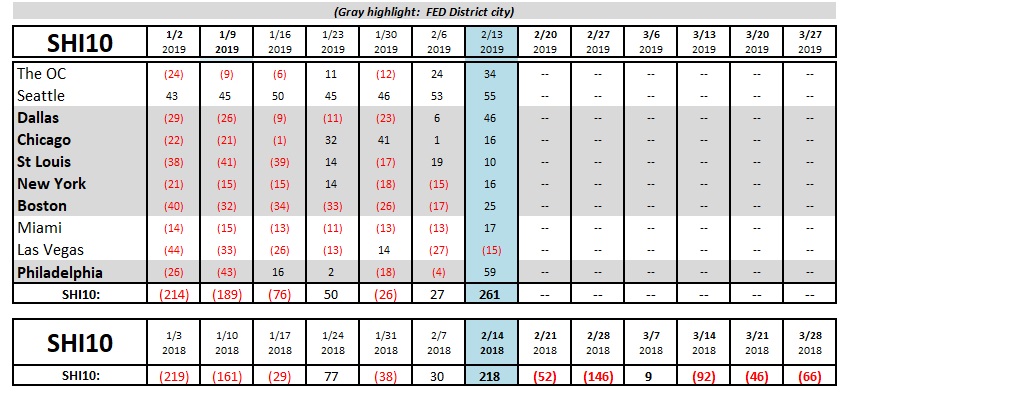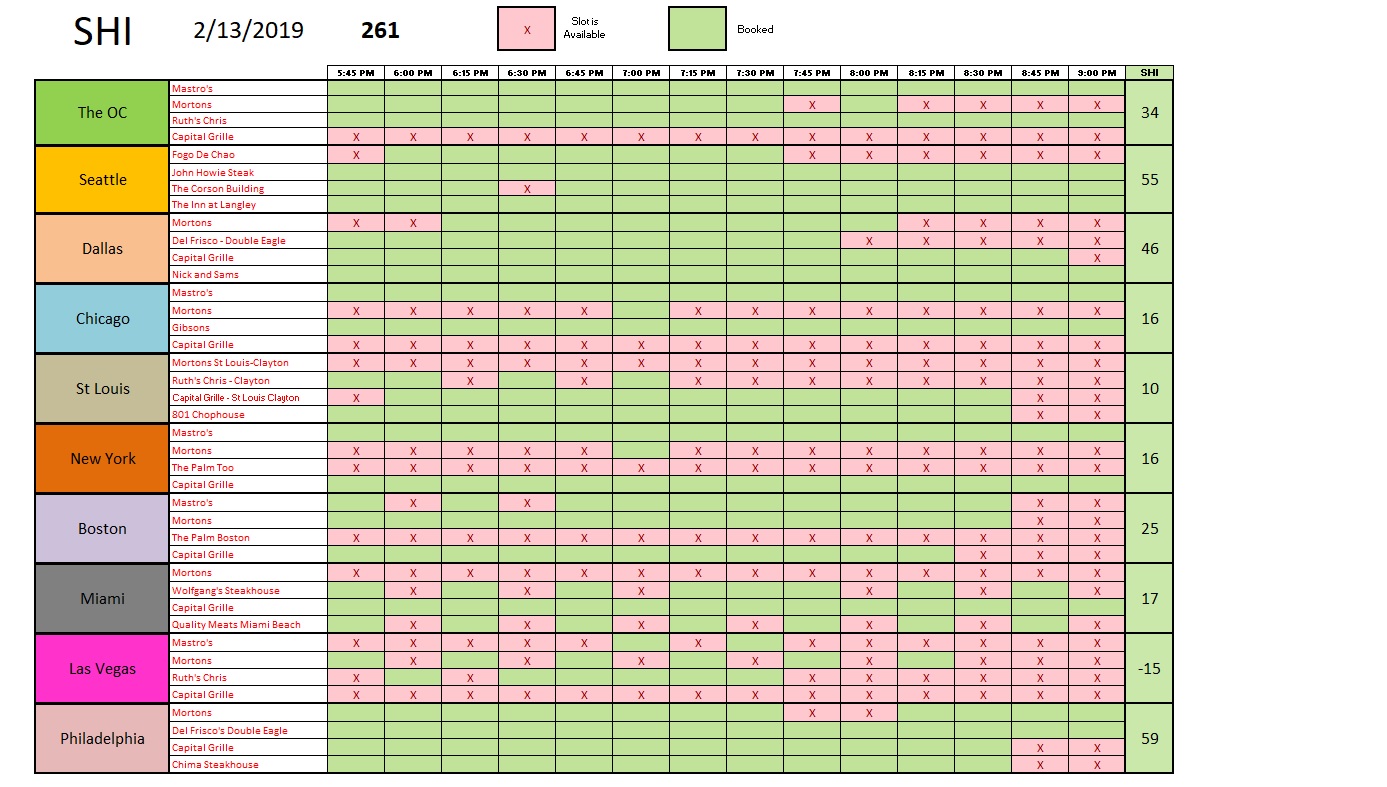SHI 02.13.19 – Hungary is Hungry … for Children

SHI 02.06.19 – The White House and The SHI
February 6, 2019
SHI 2.20.19 – Forget GDP … America Should Measure GNH!
February 20, 2019“They’re not hungry for expensive steaks. They want kids!”
I didn’t want you to get the wrong idea. They do NOT eat children in Hungary! Quite the opposite. They desperately need MORE kids. Why? The country is shrinking. So quickly, in fact, that the country is willing to waive income taxes for any woman who has 4 or more children!
Hungarian Prime Minister Viktor Orban opposes immigration. But this stance — when combined with an exodus of young workers and low fertility — has created a demographic nightmare. Hungary is shrinking … as if they were on a diet. 🙂
In 1980, their population was 10.7 million people. By 2016, only 9.8 million. To counter this problem, Orban has decided Hungarian women need to have more babies. In his annual state of the nation address, Orban announced that any woman who has four children or more will never have to pay income tax again. Now we’re talking! They can afford to buy more steaks!
Welcome to this week’s Steak House Index update.
If you are new to my blog, or you need a refresher on the SHI10, or its objective and methodology, I suggest you open and read the original BLOG: https://www.steakhouseindex.com/move-over-big-mac-index-here-comes-the-steak-house-index/
Why You Should Care: The US economy and US dollar are the bedrock of the world’s economy. This has been the case for decades … and will continue to be true for years to come.
Is the US economy expanding or contracting?
According to the IMF (the ‘International Monetary Fund’), the world’s annual GDP is about $80 trillion today. US ‘current dollar’ GDP now exceeds $20.66 trillion. In Q3 of 2018, nominal GDP grew by 4.9%. We remain about 25% of global GDP. Other than China — a distant second at around $12 trillion — the GDP of no other country is close.
The objective of the SHI10 and this blog is simple: To predict US GDP movement ahead of official economic releases — an important objective since BEA (the ‘Bureau of Economic Analysis’) gross domestic product data is outdated the day it’s released. Historically, ‘personal consumption expenditures,’ or PCE, has been the largest component of US GDP growth — typically about 2/3 of all GDP growth. In fact, the majority of all GDP increases (or declines) usually results from (increases or decreases in) consumer spending. Consumer spending is clearly a critical financial metric. In all likelihood, the most important financial metric. The Steak House Index focuses right here … on the “consumer spending” metric. I intend the SHI10 is to be predictive, anticipating where the economy is going – not where it’s been.
Taking action: Keep up with this weekly BLOG update. Not only will we cover the SHI and SHI10, but we’ll explore related items of economic importance.
If the SHI10 index moves appreciably -– either showing massive improvement or significant declines –- indicating growing economic strength or a potential recession, we’ll discuss possible actions at that time.
The BLOG:
I’ve talked extensively about demographics in developed countries.
Shrinking fertility rates are a serious problem for many countries. But this is the first time I’ve seen a politician propose a solution that makes sense. At least to me. Let’s face facts: Raising kids is expensive in advanced economies. Parents need a break. Or a tax break. And they might get one in Hungary. I’ll be interested to see if they actually implement this proposal as a law. Fascinating.
Finland has made the news by going a bit further than simply eliminating income tax. A few years ago, they decided to give money away. About $640 per month. In a “pilot” or test program with 2,000 Fins selected at random from a pool of 175,000 unemployed folks, Finland decided to test UBI theory. For about 2 years, Finland gave each of these 2,000 people $640 per month with no strings attached. Spend it how you wish, they were told. And so they did. For 2 years.
Interesting, right? No income taxes for mothers of 4 in Hungary is one thing … but imagine receiving a monthly payment from the government? That’s extraordinary.
“Official findings” are due out in 2020, but here at the SHI we don’t wait for official findings, right? No! The results are in: It comes as no surprise that the recipients liked the program. A lot. The monthly stipend helped reduce stress — both financial and mental. But then it ended.
31-year-old Tanja Kauhanen, one of the participants, said the end of the program was a shock. Per Tanja, “We all are in big trouble now to be honest, because what would happen to you if your (monthly) income decreased by €600?” She remains at her current job … but is now racking up debt and desperately searching for a higher paying job.
Hmmm…right. That is a problem.
Universal Basic Income, or UBI, is a popular topic right now. Around the globe — even here in the U.S. — the issue is being debated. And tested. It’s a fascinating idea — mind you, not one I can say I’m behind as of yet — that may solve future social problems. For example, lets assume robotics and automation becomes so widespread that the ranks of unemployed grows to, say, 25% of the population. Across the globe. That’s a real problem. Perhaps a UBI might be appropriate — and even financially possible — given those conditions? It’s hard to say today. But it is fascinating to see Hungary and Finland both wrestling with issues that were not issues 50 years ago. Things change.
But a hankering for a piping-hot T-Bone never changes! Hungary yet? Let’s sink our teeth into this weeks SHI. After all, Valentines Day approaches!

As I predicted last week (a pretty easy one), the SHI soared this week. It is even higher than ‘Valentines Day week’ in 2018! In fact, this is the first time 9 of our 10 SHI markets were in the black! And take a look at Philly: This week, their SHI surpassed Seattle! Wow. Nothing in the ‘City of Brotherly Love’ says ‘Love‘ more than starry-eyed lovers sharing an overpriced 16-ounce char-grilled rib-eye and a Mondavi cabernet. Here’s a message to restaurant owners: If you operate an expensive steakhouse and you’re not booked this weekend, well, you might want to consider a new career. Perhaps a non-profit cow sanctuary? 🙂
Here are this week’s individual restaurant results:

That’s a sea of green … booked tables are common this week. Except in ‘Vegas.
With an SHI10 reading of a positive 261, our pricey eateries are rolling in the dough this weekend. Good for them. Consumer consumption is running high.
And while the SHI is forward looking, predictive in nature, historic data is important and meaningful. Take auto sales, for example. Auto sales play a big role in the consumer consumption space. So it’s interesting to note that 2018 marked the highest level in the nineteen-year history of the loan origination data, with $584 billion in new auto loans and leases appearing on credit reports, up in nominal terms from 2017’s $569 billion.
At the same time, the flow into 90+ day delinquency for auto loan balances has been slowly trending upward. I’ve had a number of people ask if I’m concerned. In a word: No. Especially now that the FED has decided to pause on future rate increases.
Let me elaborate a bit. Here’s a NY Fed chart showing total U.S. household debt. Yes, it’s up. Even above levels in 2008. But remember that interest rates are WAY down. Meaning that while balances are higher, debt service costs are generally lower. The debt burden is larger … but the monthly cost of that debt is not.

And while 90+ day auto-loan delinquency is up, as a percentage of total outstanding auto loans, it’s not up dangerously. Take a look at this chart, again, courtesy of the NY FED:

Auto loans are the green line. About 4 years ago, the percentage of auto loans 90+ days delinquent was around 4%. Today that number is closer to 5%. This is not a troubling increase.
If you’re interested in reading the entire NY FED report, here the link to their quarterly report on “Household Debt and Credit”: https://www.newyorkfed.org/medialibrary/interactives/householdcredit/data/pdf//HHDC_2018Q4.pdf
Folks are apparently buying cars. And steaks. Clearly, the consumer is healthy … even if their bank accounts and arteries are not.
- Terry Liebman




